The white-tailed deer is hands down the most popular big game animal in the world.
Every fall, more than 10 million hunters hit the American woods and farmlands to pursue this handsome — and tasty — creature.
Deer hunting is very nuanced.
It takes time and experience to fully grasp whitetail behavior.
These wily creatures even throw seasoned veterans regular curveballs. However, if you’re itching to join the millions of deer hunters, we’re here to walk you through the basics.
You won’t be a deer hunting pro by the end of this article, but you will have enough info to start opening day with a little more confidence.
So, keep reading…
Table of Contents
Loading…
The Low Down on Whitetails
Deer hunting is an incredibly diverse sport. White-tailed deer (Odocoileus virginianus) have an expansive range that stretches from the southern Yukon into parts of South America.
In the U.S., whitetails can be found in every state except Alaska and Hawaii, although they only occupy small parts of Utah, Nevada, and California.
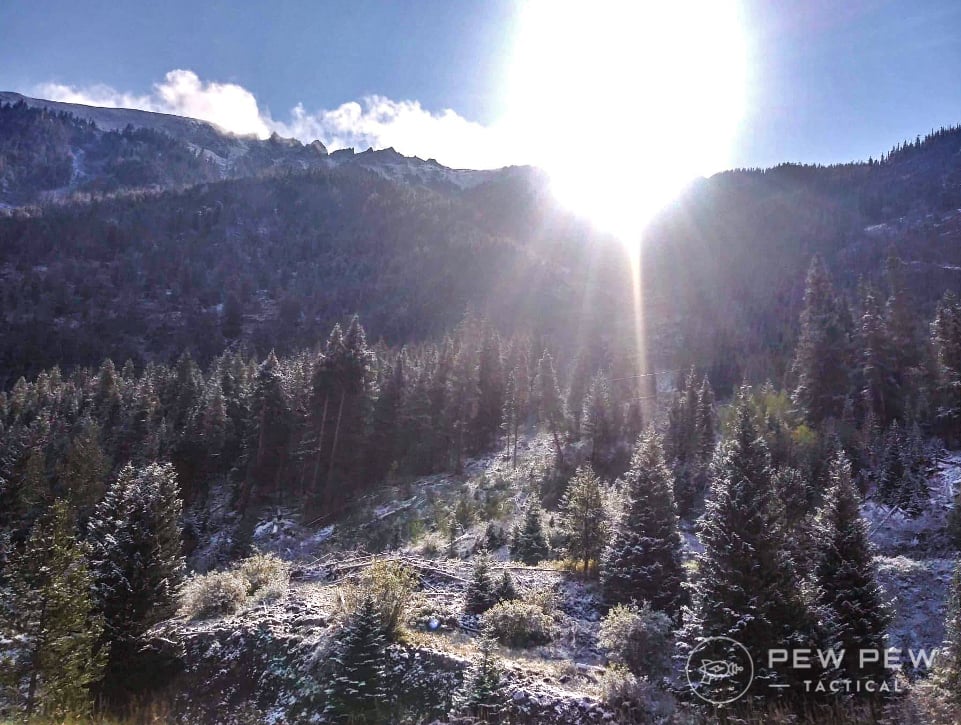
Their massive range means they thrive in disparate habitats.
You can find whitetails in swampy river bottoms and high in the mountains. They live in thick forests and open scrublands.
Whitetails thrive in the remote backcountry as well as American suburbs.
Because whitetail habitats are so varied, so are the approaches to hunting them.
Some deer hunters hunt with hounds, others sit and wait in tree stands, and others use spot-and-stalk techniques. There is no one-size-fits-all method of deer hunting.
That makes it incredibly difficult to condense the ins and outs of deer hunting into a single article.

We’re going to try to cover the basics but be aware that the needs of an Iowa farmland deer hunter differ from one stalking big bucks across the shrubland of Western Texas.
Let’s Talk Cartridges
As we mentioned, deer hunting is diverse. That means recommending guns and calibers for deer hunting is difficult.
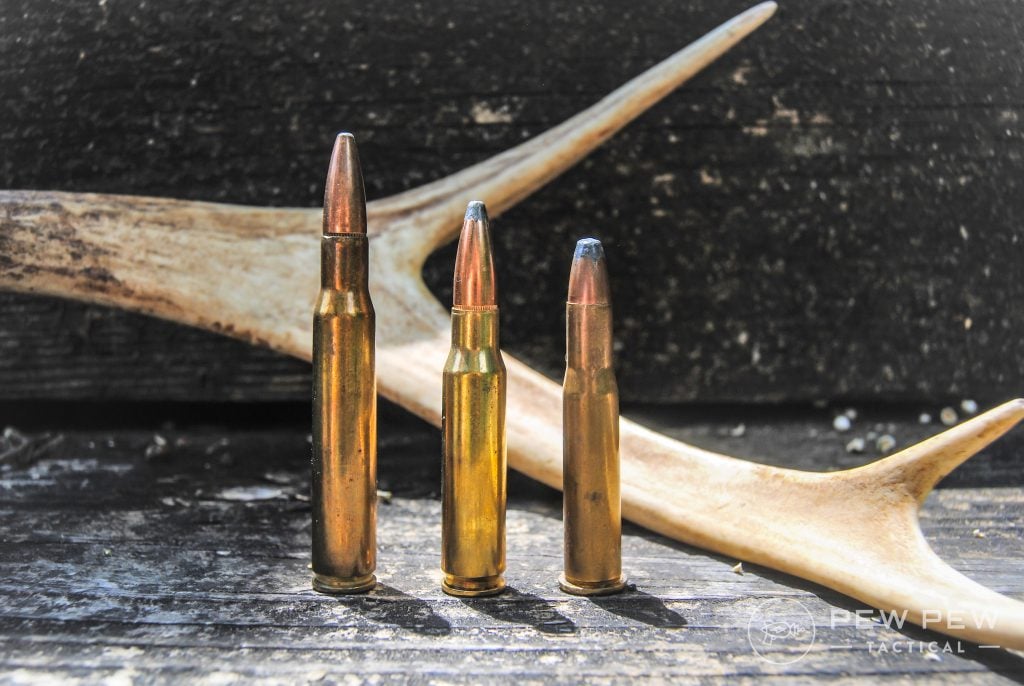
The perfect rifle for bagging big bucks in thick woods isn’t ideal for stretching shots across an open field of harvested corn.
Here is a quick rundown of some of the most popular deer cartridges and what they do best…
.243 Winchester
Although some shooters think .243 Win is too small for whitetails, plenty of deer hunters use it.
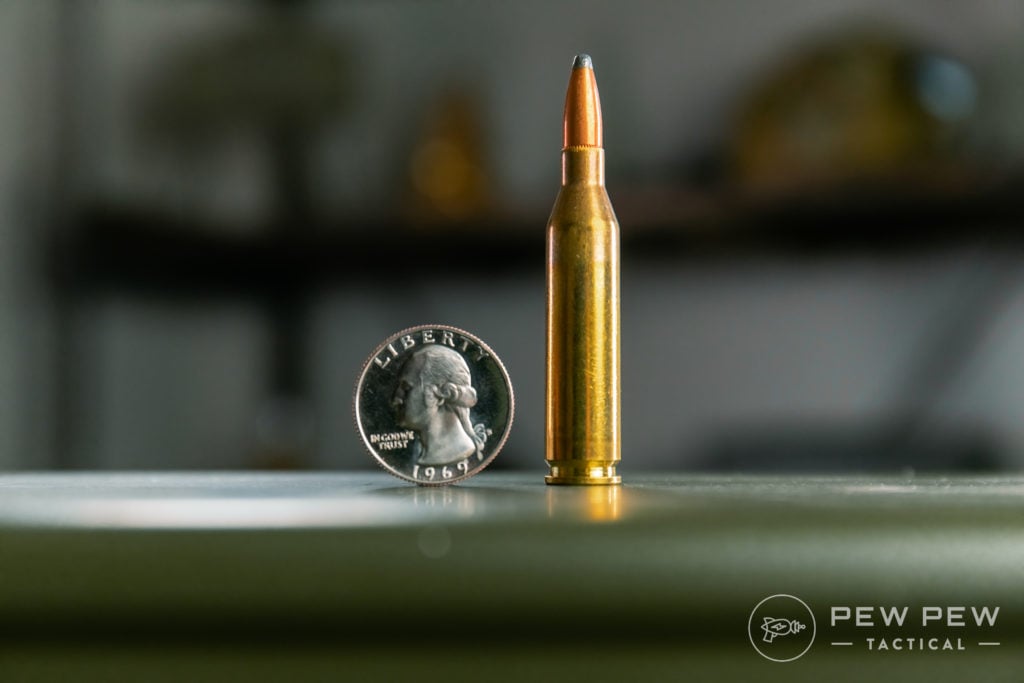
It has a well-deserved reputation for its flat-shooting accuracy. This mild-shooting cartridge is a popular option for young or recoil-shy shooters.
.270 Winchester
The .270 Winchester is wildly popular among deer hunters and regularly ranks in the top five sales for most major ammo manufacturers.
This cartridge is derived from the .30-06 Springfield.
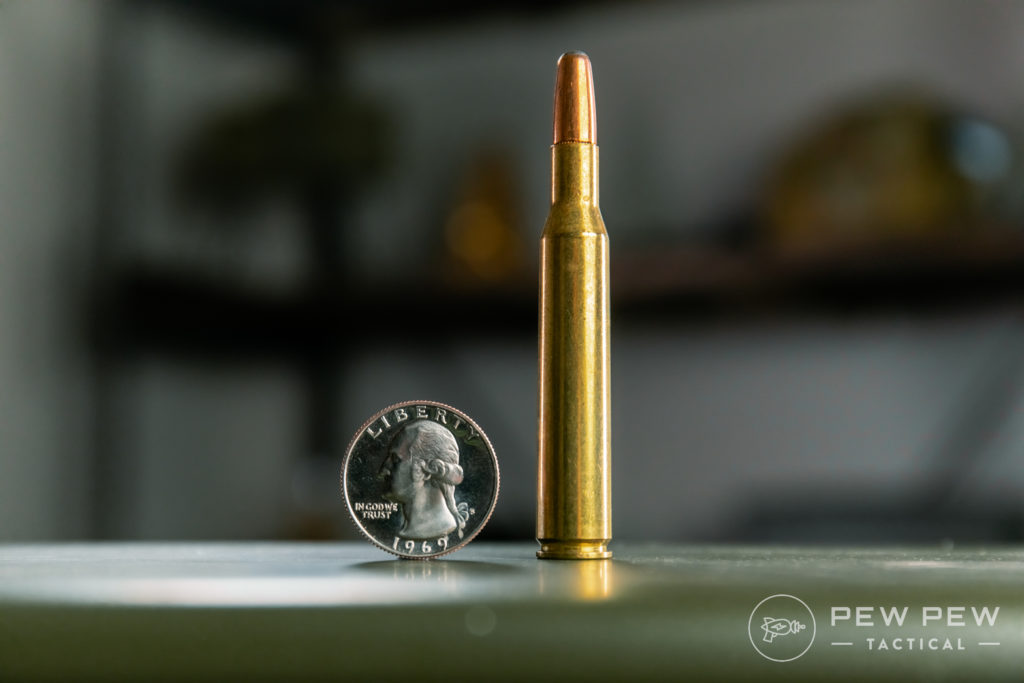
However, it shoots a smaller bullet at a faster velocity with a flatter trajectory. It also manages to do it with milder recoil.
Although not as powerful as the venerable .30-06, .270 Win has plenty of oomph for dropping whitetails within the 300-yard range.
6.5 Creedmoor
This relative newcomer to the deer hunting world was originally designed for long-range precision shooting.
Introduced in 2007, 6.5 Creedmoor is still the new kid on the block. However, it has earned an insane level of popularity in its short life, and for good reason.
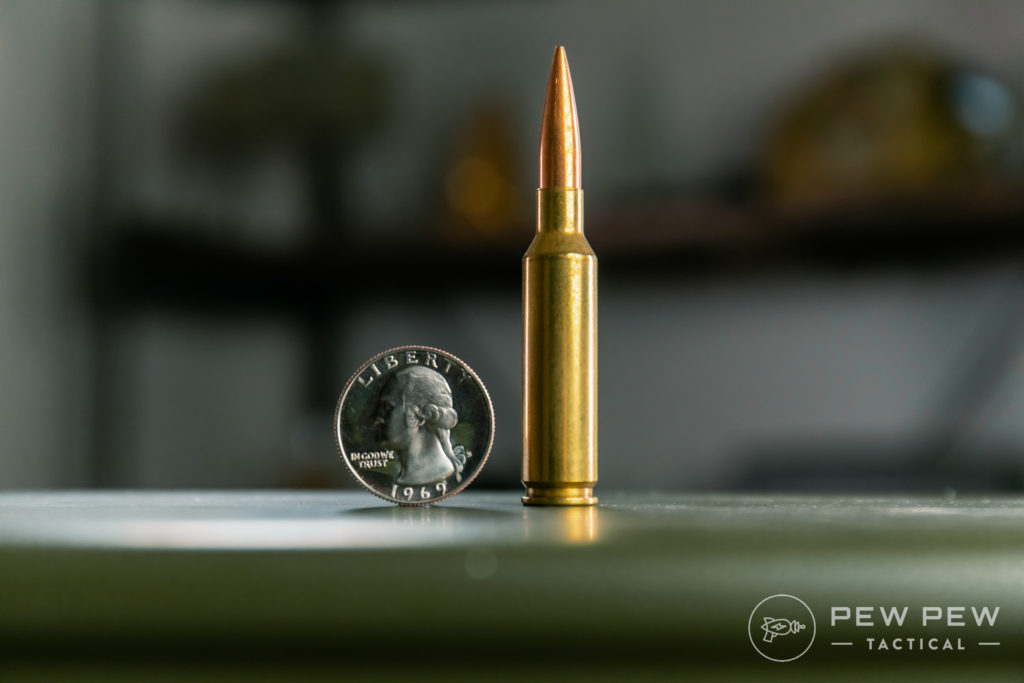
First, it offers match-winning accuracy. Honestly, you could bust a tick of a deer’s ass with this one at 100-yards.
Second, it shoots relatively heavy projectiles with high sectional density that are super effective for taking down deer-sized game.
.30-30 Winchester
The .30-30 Winchester cartridge has been used to put more venison on more family tables than any other cartridge in history.
It was first released in 1895 for the Winchester Model 1894 lever-action rifle. However, it remains one of the most popular deer-dropping cartridges today.
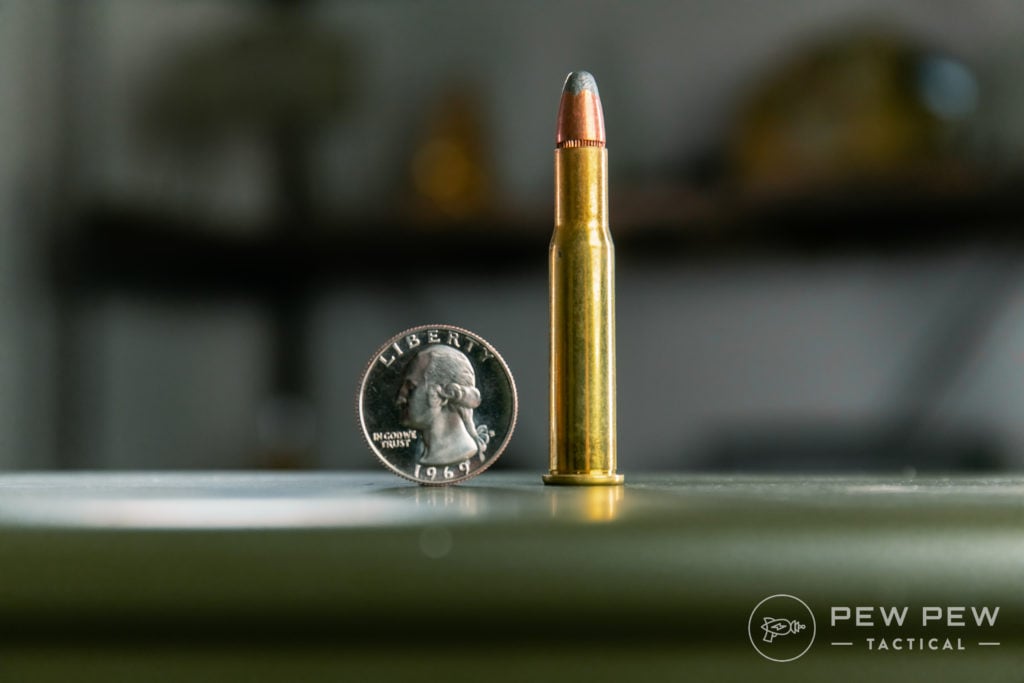
Why is this antiquated cartridge still so popular with faster, sleeker, more modern options on the market?
Because it works!
The recoil is mild, and most .30-30 rifles are lightweight, easy to swing and make terrific brush guns for hunting forested whitetail terrain.
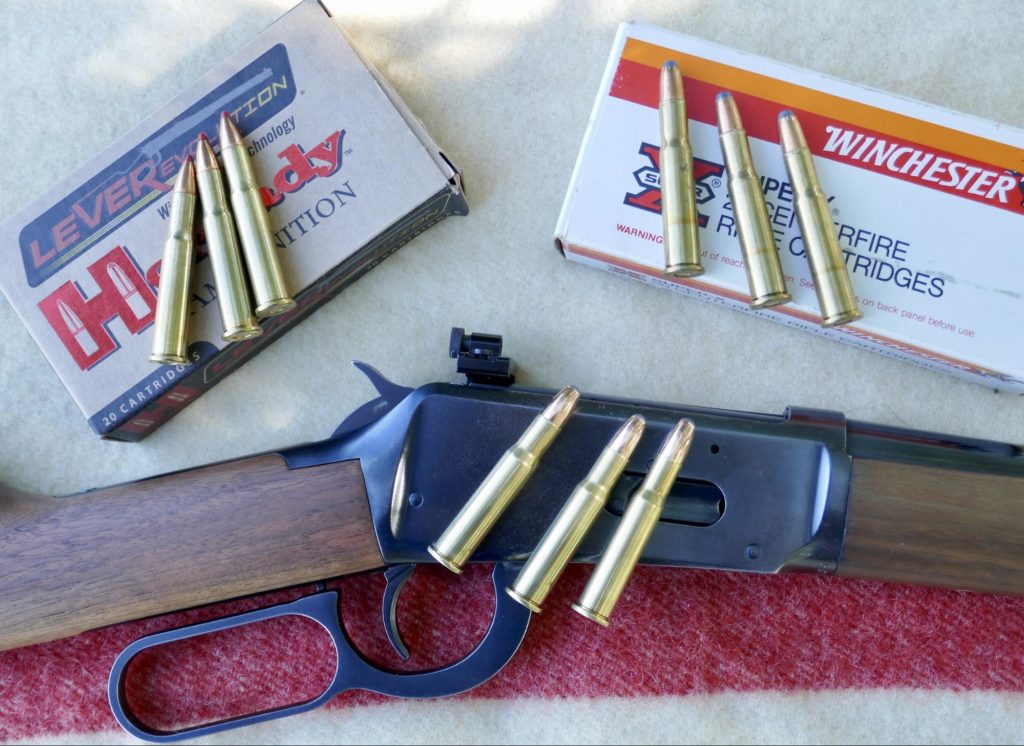
You won’t be dropping hawgs at 500-yards with a .30-30, but 150 to 170-grain bullets will punch through vitals out to 250-yards.
Want some specific .30-30 ammo recommendations? Check out Best .30-30 Ammo.
.30-06 Springfield
The .30-06 (pronounced “thirty aught six”) Springfield may be the most popular big game cartridge in North America.
It is also popular for large and dangerous game on other continents.
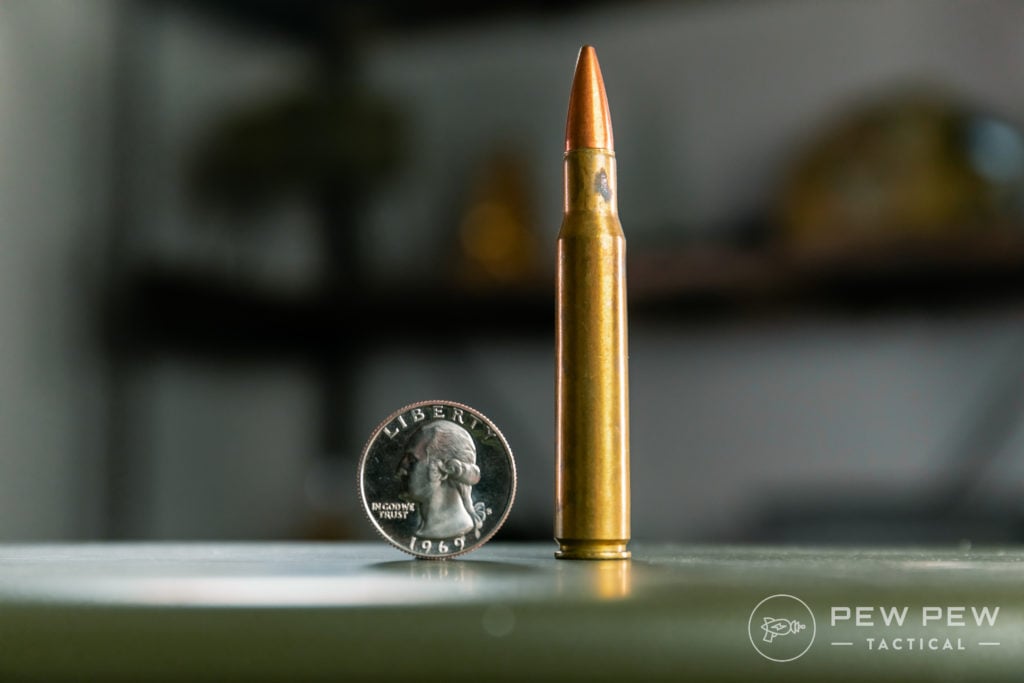
With a relatively flat trajectory and respectable long-range accuracy, the .30-06 Springfield also delivers a healthy amount of terminal energy.
This makes it perfect for hunters who want a single big game cartridge capable of harvesting whitetails, mule deer, elk, moose, and black bear.
We have .30-06 ammo recommendations, too. Check them out here.
.308 Winchester
The .308 Winchester is basically the civilian version of the military 7.62×51mm NATO.
This cartridge is slightly less powerful than the .30-06 but offers the advantage of slightly milder recoil.
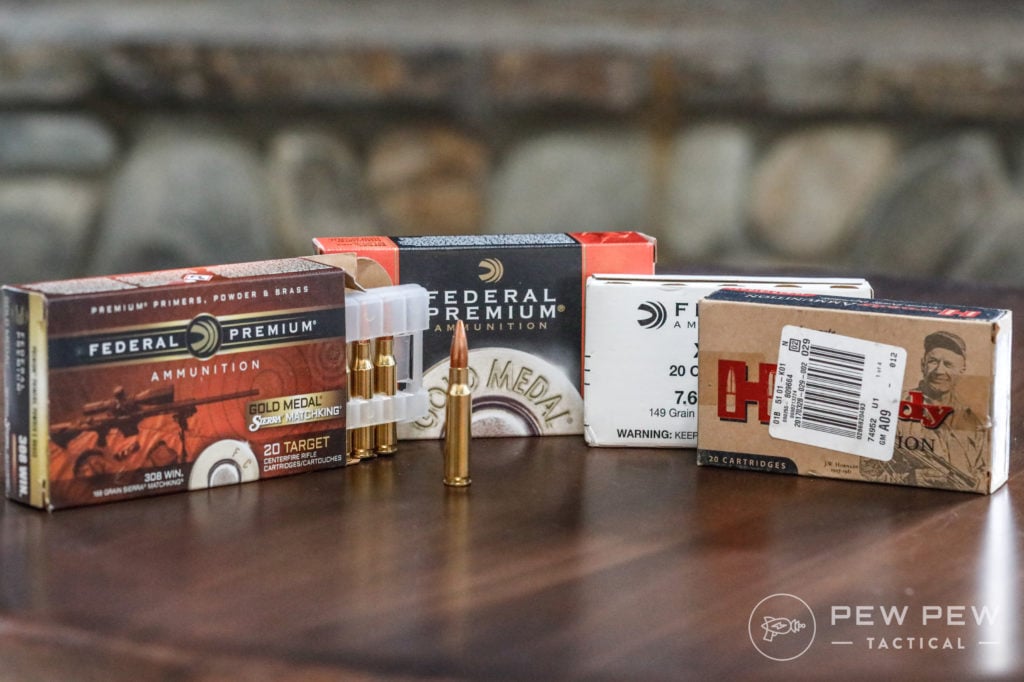
It’s readily available and comes topped with pretty much any bullet design your imagination can dream up.
Plus, this cartridge is the obvious choice if you want to pop deer with an AR-style rifle.
Looking for the Best .308 Ammo? We’ve got you covered.
7mm Remington Magnum
Although the 7mm Remington was engineered for elk hunting, it makes an incredibly capable long-range whitetail cartridge.
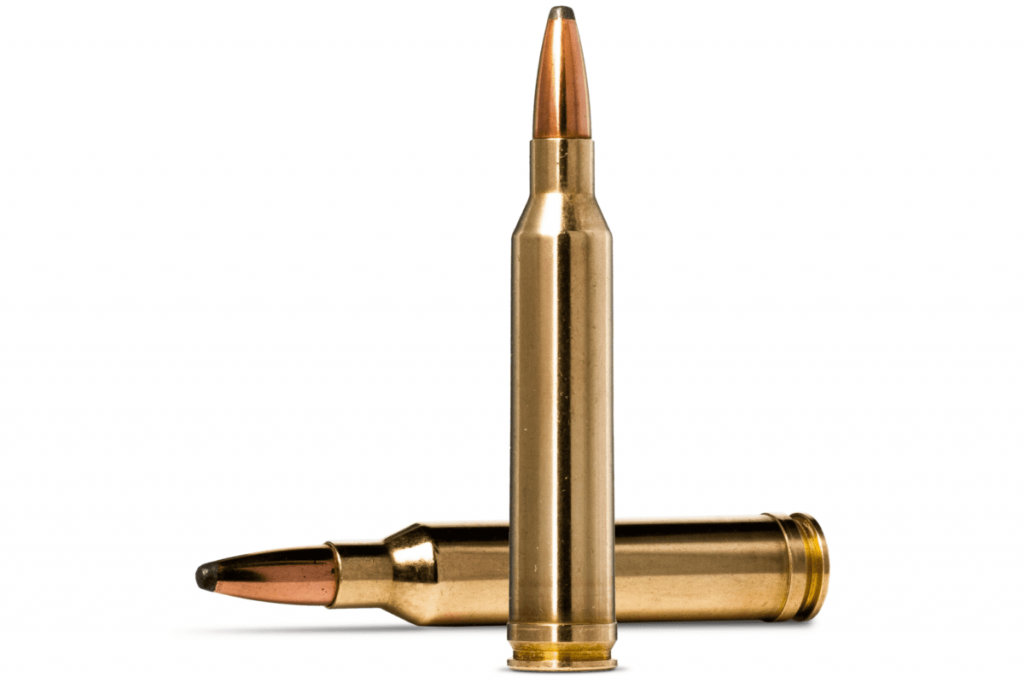
It offers speed, power, and a pancake-flat trajectory with surprisingly manageable recoil.
If you want to stretch your shots beyond 300-yards, this is the perfect tool for the job.
Bullet Break-Down
No matter which rifle or cartridge you choose to tote into the deer woods, you’ll also need to decide what type of bullets you’ll shoot from your rifle. Here is a run-down of your basic options.
Full Metal Jacket (FMJ)
FMJ ammo is the standard issue for military use. However, it is not the best option for deer hunting. It’s even illegal to hunt deer with FMJs in some states.
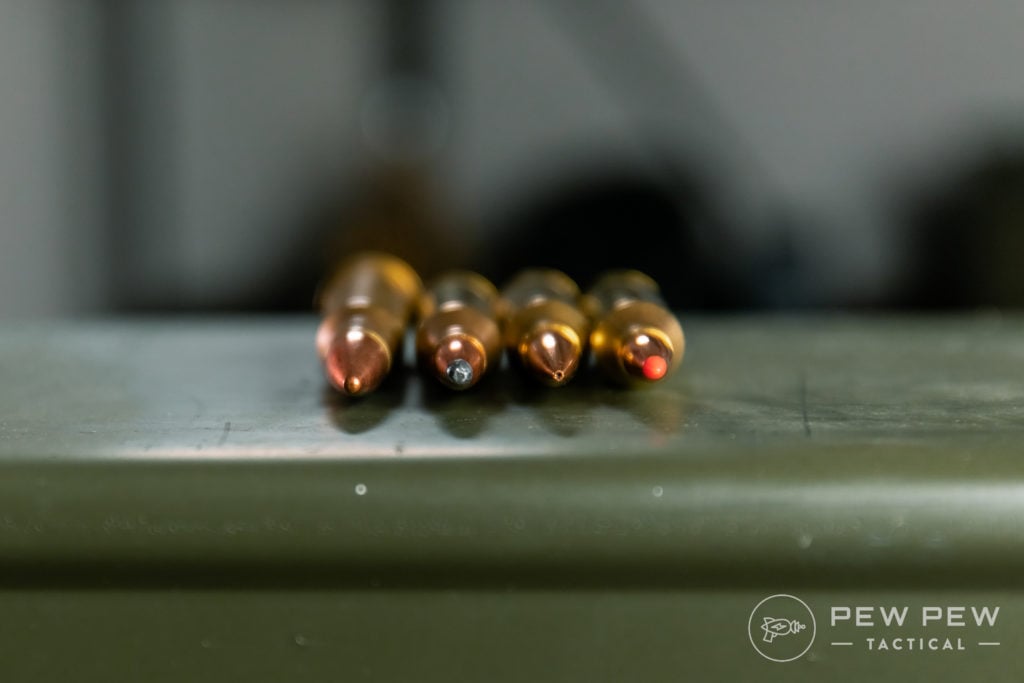
The best way to put venison on the family dinner table is through massive tissue damage and blood loss. FMJs just can’t deliver that kind of damage in most situations.
Is it possible to kill a whitetail with FMJ ammo? Yes, especially with a well-placed shot.
However, just because you can, doesn’t mean you should.
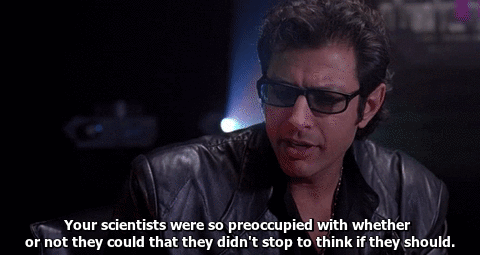
Quick, humane kills should be the goal of every deer hunter, and an FMJ just isn’t the best tool for the job.
Soft Points (SP)
Soft points have been around practically forever — there’s a pretty good chance your great-grandfather used soft points in his deer rifle.
There are definitely fancier, more technologically advanced bullets out there. However, plenty of deer hunters still use soft points for one very simple reason…they work.
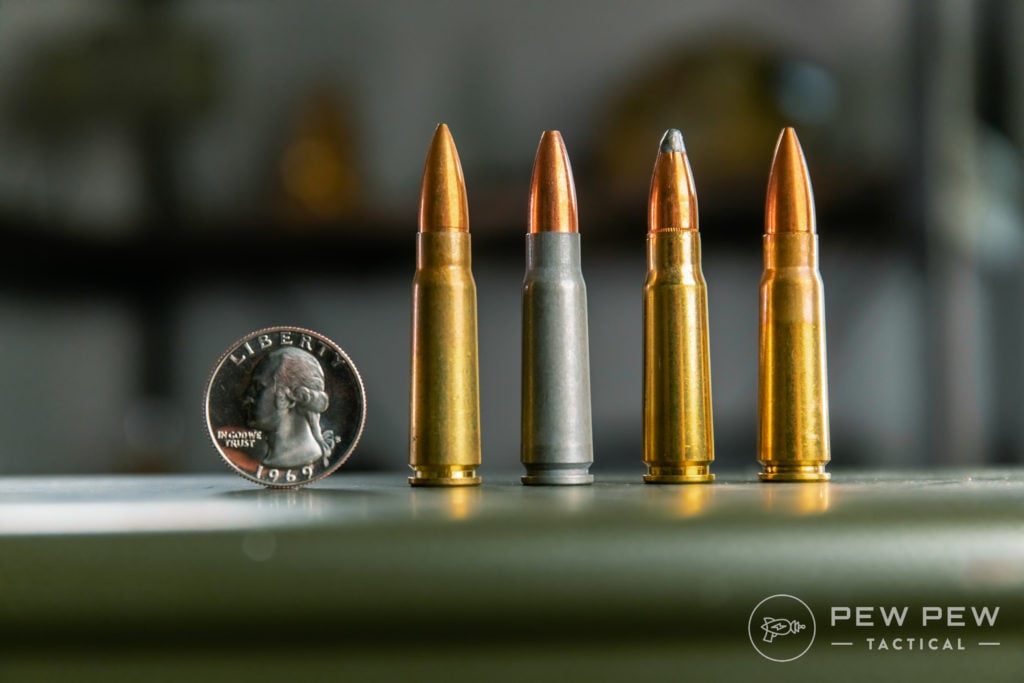
Traditional soft points provide a nice balance between expansion and penetration.
They drive deep enough to reach vital organs yet mushroom in soft tissue to create serious damage on their way there.
Traditional Bullets for Traditional Rifles
Soft points also work best in tubular magazines.
So, if you’re hunting with a lever-action like the Winchester Model ‘94, you’ll want to stick to soft points — particularly those with a flat or round nose.
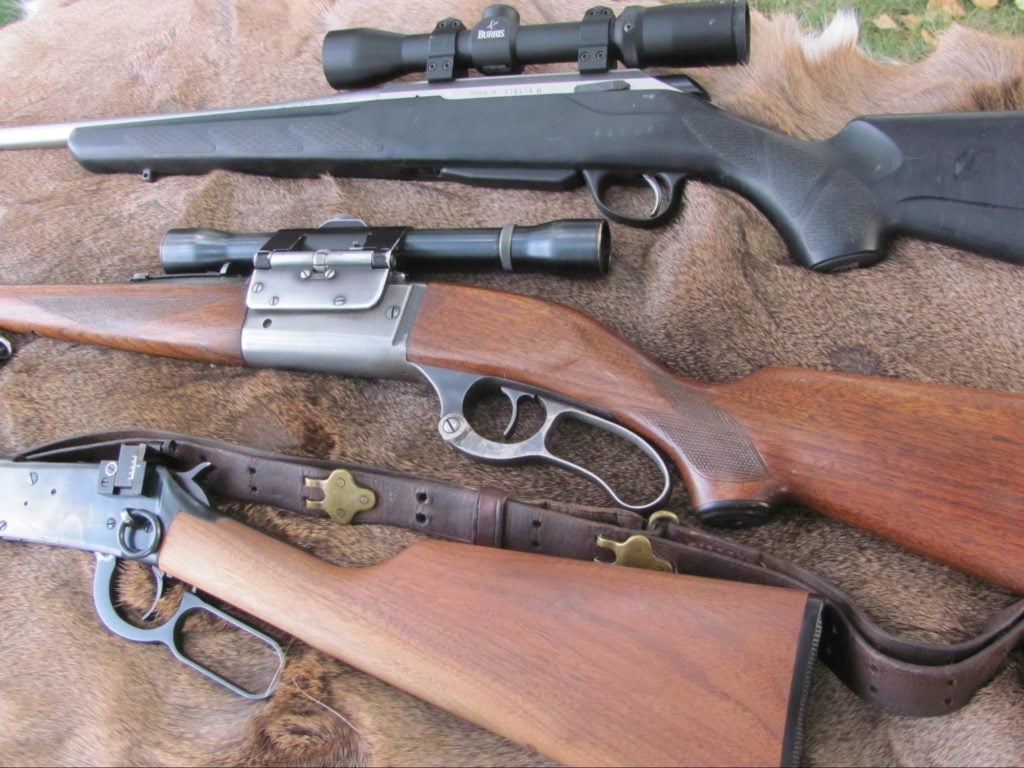
Hollow points can cause feeding issues, and pointed bullets can pose a safety hazard.
(Theoretically, a spitzer-style bullet could dent the primer of the bullet in front of it, which is a big time no bueno).
If you’re looking for super-reliable traditional soft points, it doesn’t get more traditional or reliable than Remington Core-Lokt.
Prices accurate at time of writing
Prices accurate at time of writing
-
25% off all OAKLEY products - OAKLEY25
Copied! Visit Merchant
These babies have been around for generations.
In fact, Remington Core-Lokt has probably filled more deer tags than any other brand of ammunition.
Hollow Points
Hollow points are the standard go-to bullet design for self-defense.
When hollow points hit soft tissue, pressure forms inside the cavity, which forces the outside edges of the bullet to expand.
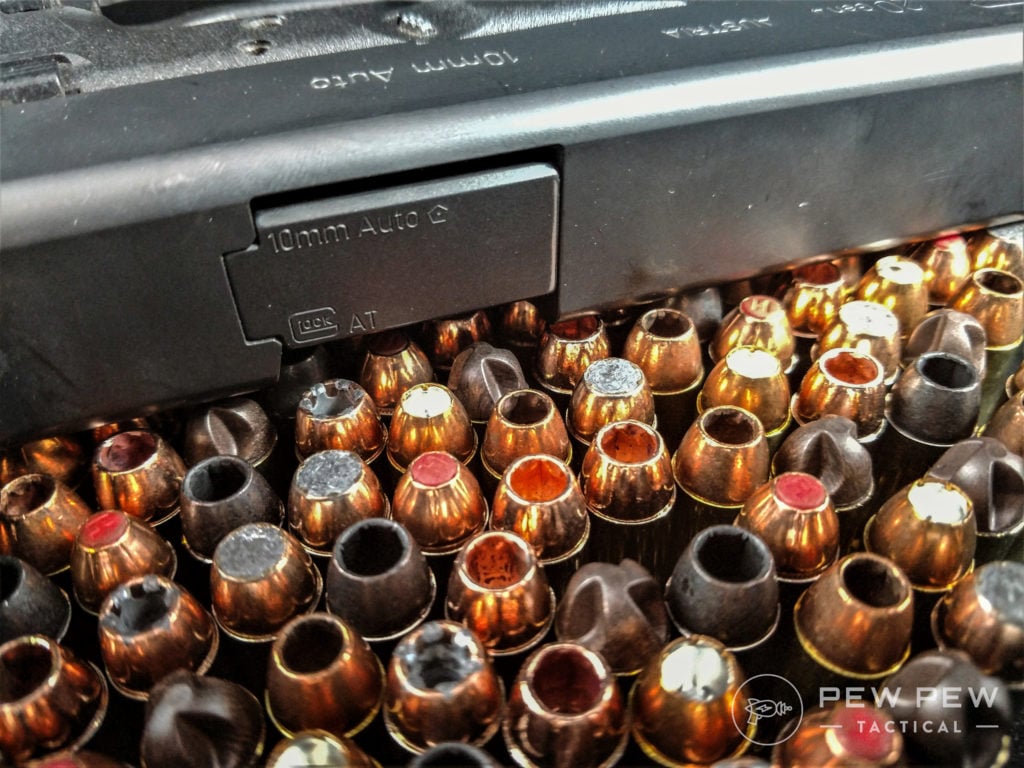
This expansion increases the bullet’s diameter, which in turn increases the diameter of the wound channel.
However, there’s a trade-off for that expansion.
The act of expansion eats up some of the bullet’s energy, which slows the projectile and limits penetration.
That isn’t necessarily a bad thing. Because hollow points slow down in soft tissue, they often stop inside the deer’s body, dumping some serious concussive energy.
It’s like getting hit by a truck.

However, limited penetration can be a concern for deer hunters.
Unfortunately, not every deer drops dead in his tracks.
Pass-through wounds are good for hunters. It means more blood loss. More blood loss leads to an easier-to-follow blood trail, which increases your odds of recovering wounded game.
Some hunters also shy away from hollow points because the end cavity can have a negative effect on in-flight ballistics. This could affect accuracy, especially at longer ranges.
Also, some states have hollow-point restrictions, so check local regulations before you head out into the woods.
Federal Premium Fusion ammo features a bonded hollow point design that offers excellent weight retention, which translates into surprisingly deep penetration.
Prices accurate at time of writing
Prices accurate at time of writing
-
25% off all OAKLEY products - OAKLEY25
Copied! Visit Merchant
Ballistic Tip Bullets
Ballistic tip (sometimes called polymer tip or plastic tip) bullets are engineered to increase long-range accuracy without sacrificing terminal performance.
These bullets are basically hollow points topped with sleek, hard plastic tips. The design makes the projectile more aerodynamic and aids expansion once it reaches the target.
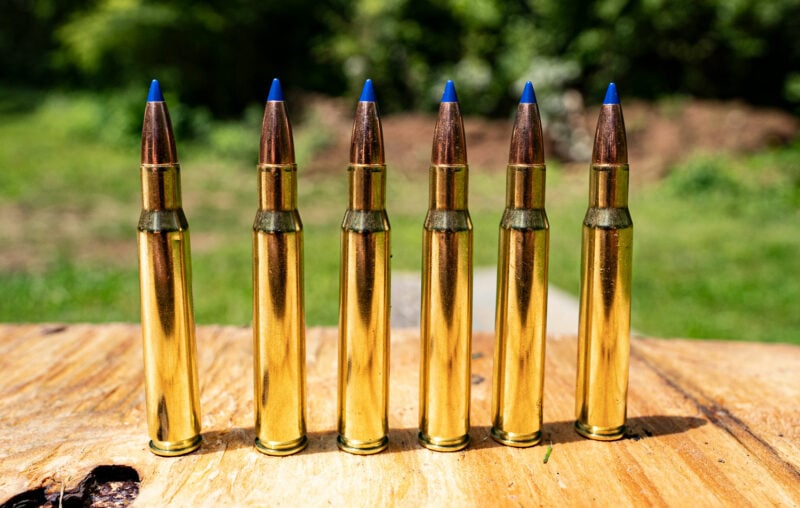
Ballistic tip ammo is modern, and it looks the part. These super sexy, high-tech bullets are sleek and deliver state-of-the-art performance you should expect from pricey, modern ammo.
While most major ammo manufacturers offer some form of ballistic tip ammo, Nosler gave birth to this design.
We wanted to give Nosler the attention it deserves, so we’re recommending Nosler Ballistic Tip Ammo here.
Prices accurate at time of writing
Prices accurate at time of writing
-
25% off all OAKLEY products - OAKLEY25
Copied! Visit Merchant
Optics for Deer Hunting
We can’t close out the discussion on deer rifles without mentioning optics.
A quality riflescope enhances shooting accuracy and increases your effective range.
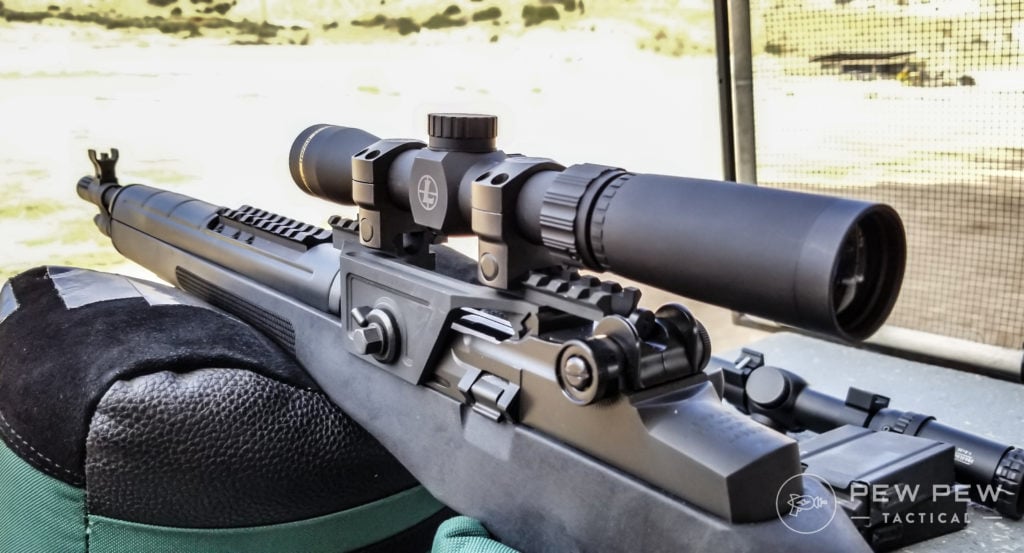
Just like there is no one perfect deer rifle for every occasion, there isn’t one perfect scope, either. Factors like shot distances, weight, required eye relief, and budget all come into play.
However, there are some standard features to keep in mind when looking for an optic for deer hunting.
A scope with a 3-9x magnification range will suit average hunting ranges.
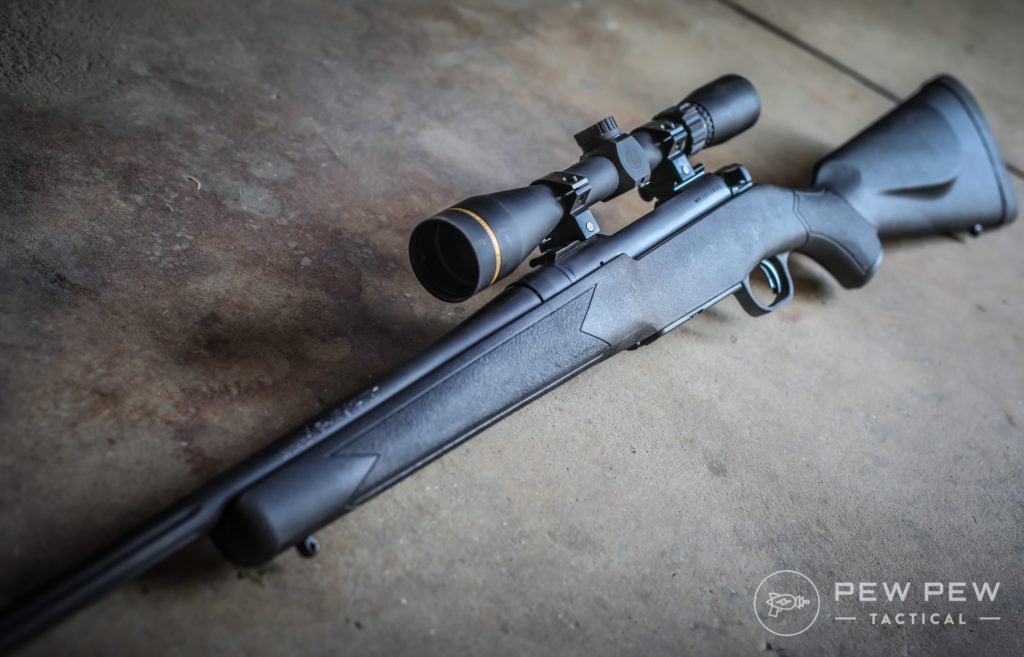
Because whitetails are corpuscular, meaning they are most active at twilight, you’ll also want a scope that provides solid low-light performance.
The Leupold VX-Freedom 3-9x40mm is a solid and affordable option for deer hunting.
Prices accurate at time of writing
Prices accurate at time of writing
-
25% off all OAKLEY products - OAKLEY25
Copied! Visit Merchant
It features Leupold’s Twilight Light Management System, which excels at light transmission, making it perfect for low light shooting.
For more on optics, check out our Deer HUnting Optics Guide!
Getting Past the Eyes and Noses
It doesn’t matter what firearm you’re hauling or what ammo you have inside if you don’t see any deer while you’re hunting.
Getting yourself where the deer are requires some basic knowledge of deer behavior. It also requires you to become invisible to their eyes and noses.
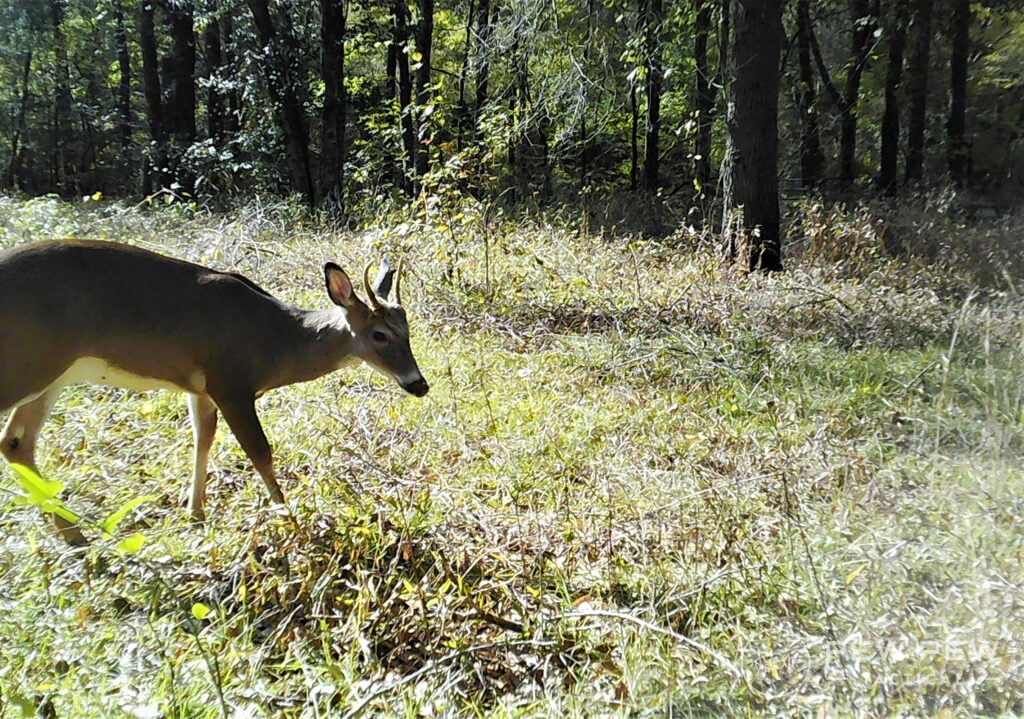
Whitetails have some of the most sensitive noses in the animal kingdom.
With 297 scent receptors and 34 square inches of nasal cavity, there isn’t much that gets past a deer’s nostrils.
Whitetails can register multiple scents simultaneously and detect human scent from up to a half-mile away.
Their eyes aren’t half bad, either. Scientists estimate whitetail vision to be somewhere near 20/100.
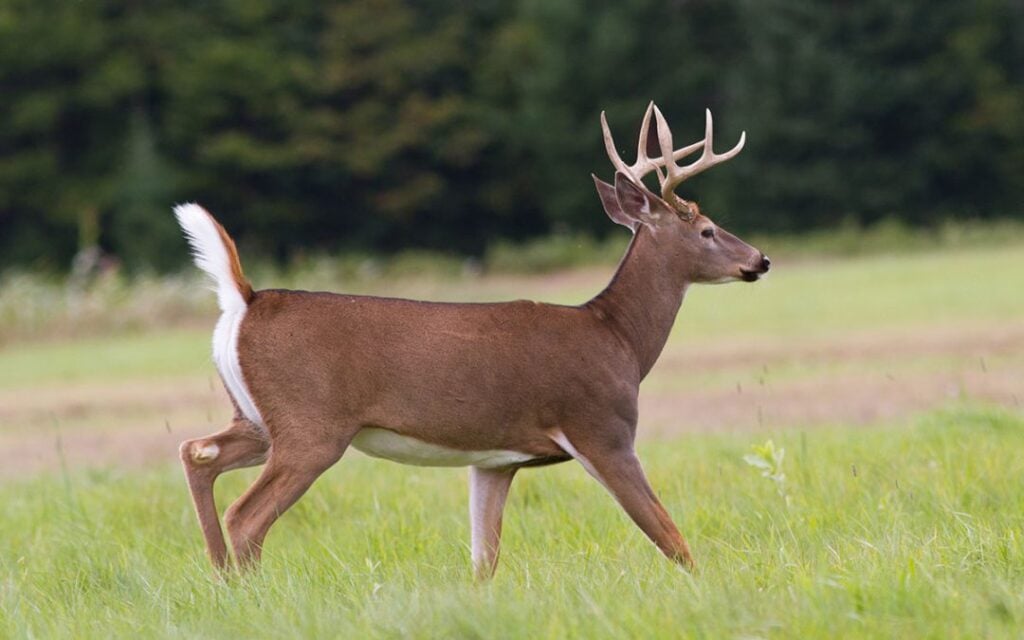
That means they can see much more detail at a distance than the average human. They also have a field of view that stretches a full 310 degrees.
Fooling a deer’s super sniffer requires hunters to “hunt the wind.” That basically means you’ll want to hunt downwind of the deer.
You’ll also want to manage your human scent to help swing the odds in your favor.
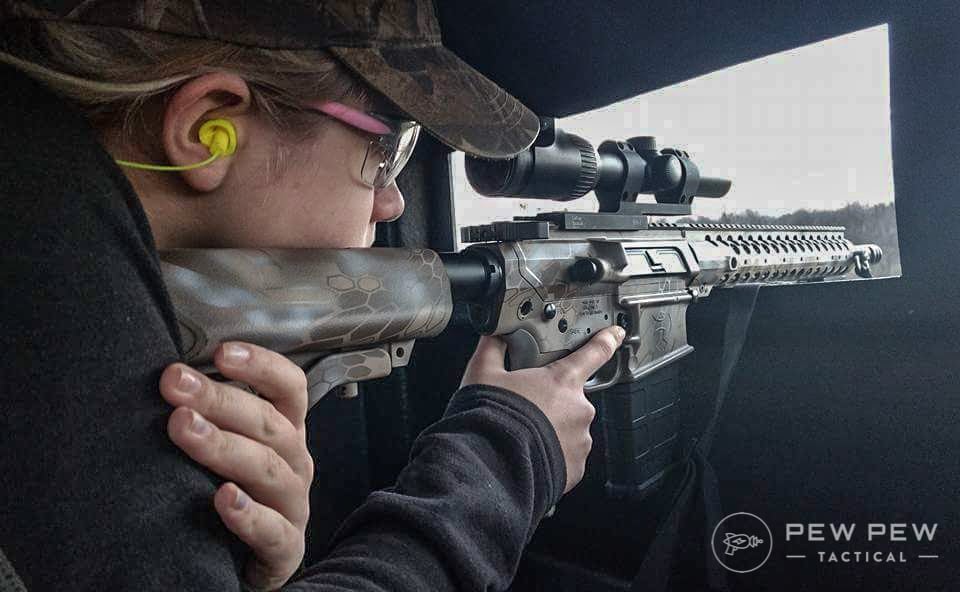
Start with a clean body but avoid perfumy soaps and shaving cream.
Instead, opt for scent elimination products like Scent-A-Way Deodorizing Body Wash and Shampoo and finish with Scent-A-Way antiperspirant.
These products work to neutralize human odors and help prevent the stink while you’re in the field.
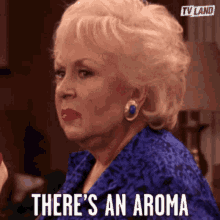
You can also use a cover scent to mask the human stench.
Our favorites are Hunters Specialties Fresh Earth Wafers and Tink’s Acorn Power.
The best way to stay hidden from those keen whitetail eyes is to stay still.
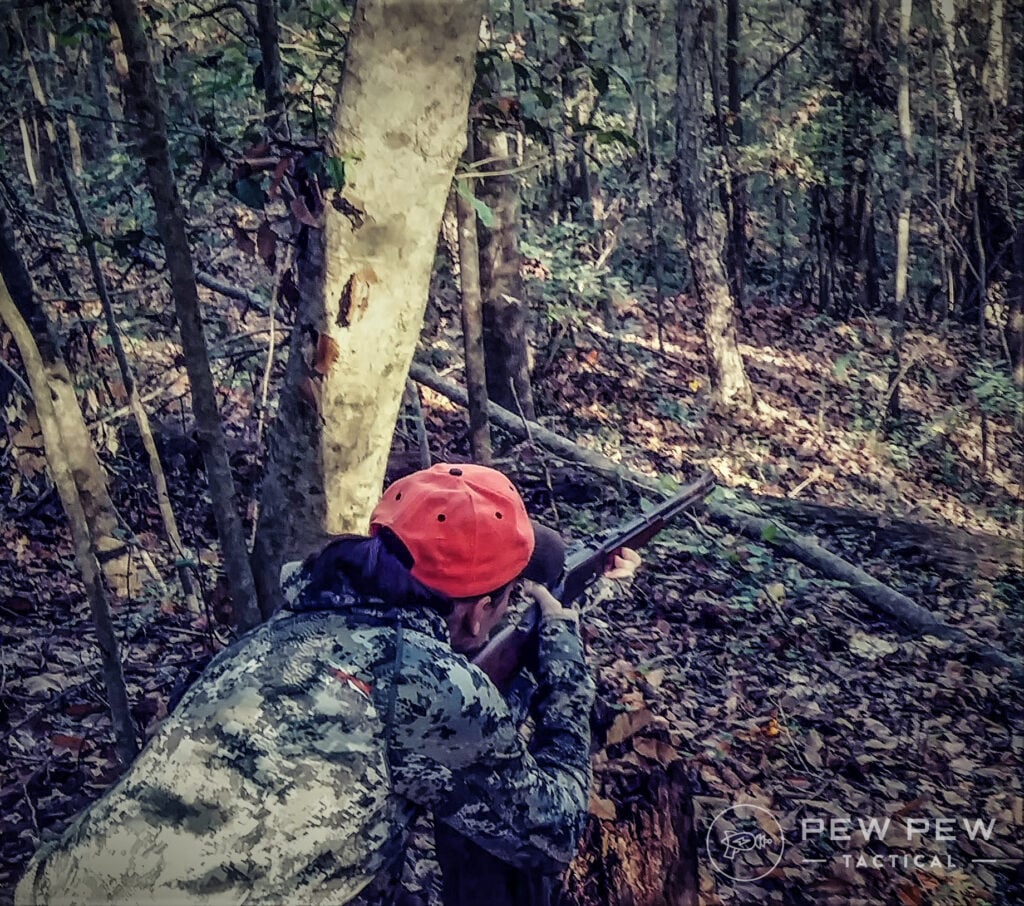
Deer can pick out even the slightest movement from pretty far off.
Some quality gear in a decent camo pattern can also help you blend in with your surroundings like a deer-hunting ninja.
Up and Away
Another strategy is to get yourself up off the ground.
Hunting from an elevated position can help your scent waft well above those nostrils. It also helps you get out of the deer’s direct line of sight.
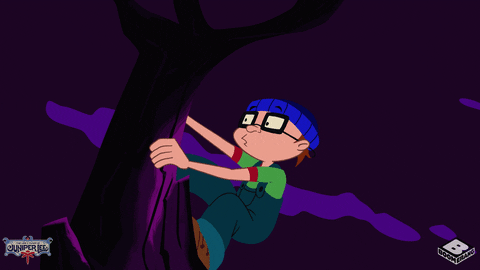
This is a particularly effective strategy for bowhunters, who need to get up close and personal with deer to make effective shots.
You can choose a semi-permanent ladder stand if you plan to hunt from the same tree multiple times per season.
Another option is a portable climbing stand which provides serious versatility.
-
25% off all OAKLEY products - OAKLEY25
Copied! Visit Merchant
Since you haul this type of stand on your back to your location and then use it to climb a suitable tree, it provides the freedom to follow changing feeding habits, shifting winds, or your heart’s desire.
Other Essential Gear
Flashlight
Everyone who ventures into the woods should carry a flashlight loaded with fresh batteries, even if they hunt close to the truck.
Tracking a wounded deer can easily get you turned around in the woods and leave you hoofing it out after dark.
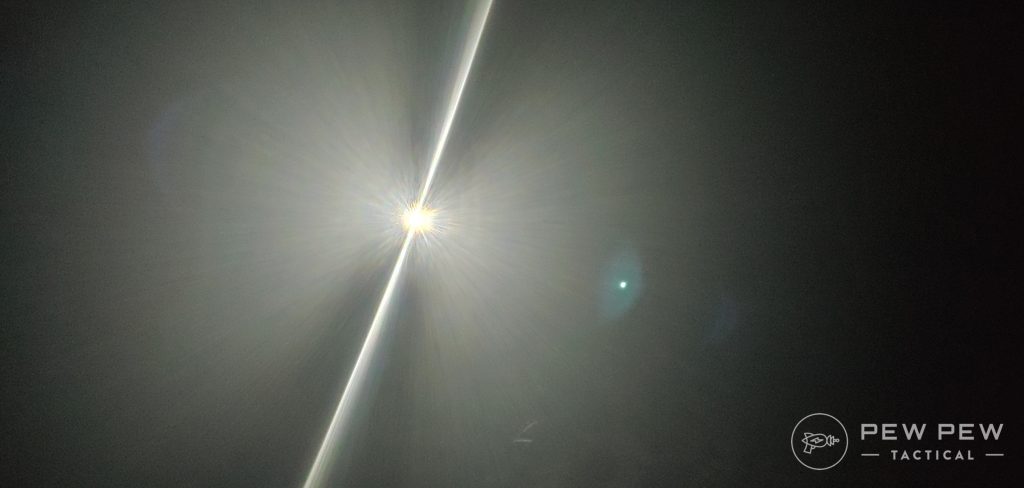
Since we don’t see nearly as well as deer do after the sun goes down, a reliable flashlight could literally save your life.
Personally, I’m a huge fan of the headlamp. It leaves my hands free to push aside branches, field dress a deer, and haul out fresh meat. However, any reliable flashlight will do the trick.
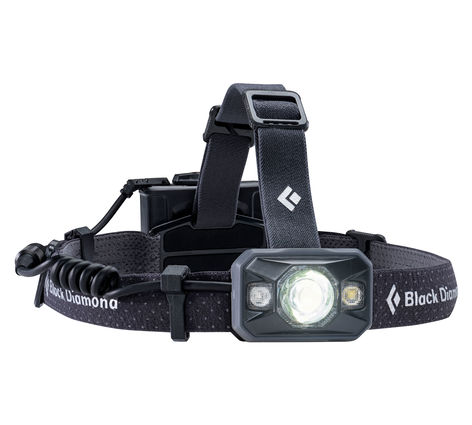
Snacks and a Water Bottle
Snacks and water are handy to have when you’re sitting on a deer stand for long hours being bored out of your mind.

However, if you ever end up lost in the woods, you’ll be even happier that you carried these with you.
Compass and a Topo Map
There are a ton of apps you can download that provide detailed topographical maps and real-time GPS positioning. (OnX Hunt is my favorite!)
However, phone batteries fail, and having a compass and paper map (and the skills to use them) are handy tools to have if you end up lost while tracking a wounded buck.
-
25% off all OAKLEY products - OAKLEY25
Copied! Visit Merchant
A Knife
It takes a little skill and a whole lot of patience to fill those deer tags. When you do, you’ll need a good knife to field dress and skin your trophy.
Make sure your knife has a sharp blade and a non-slip handle (your hands are going to get bloody).
We go into all the details in our article What Makes a Good Skinner?
First Aid Kit
Honestly, you shouldn’t go anywhere without a basic boo-boo kit. But wandering into the woods without one is a special kind of stupid.
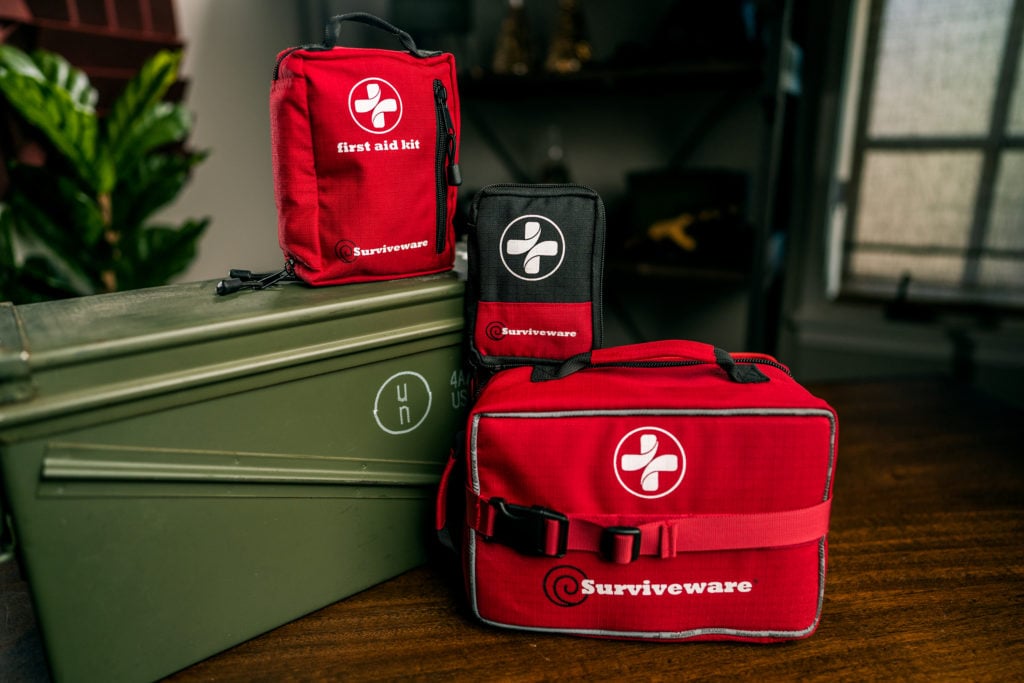
(And don’t forget you need to know how to use a first aid kit. So before heading out, take a class or two. We made it easy with the Best First Aid Classes.)
Hunting Licenses and Permits
The requirements, costs, and specific licenses needed for deer hunting differ by state. Most states require hunters to take a Hunter Safety Course to obtain a permit.
In some areas, you may need to purchase your deer tags separately from your general hunting license.
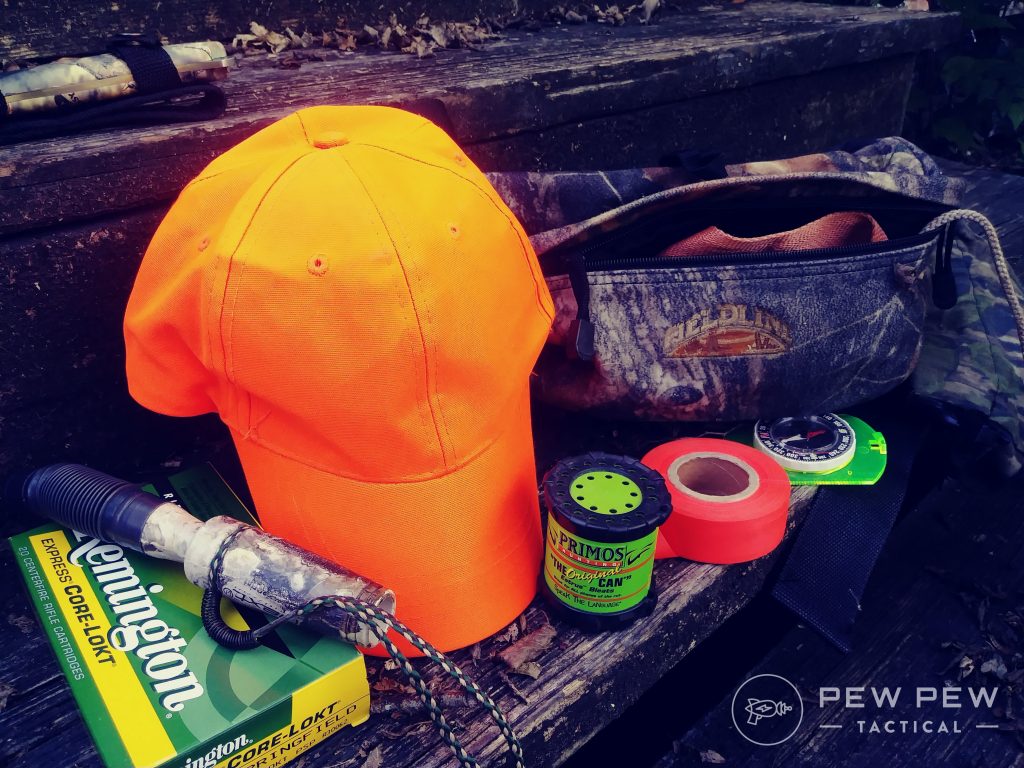
If you plan to hunt public land, there may be an additional fee.
The good news is every dollar you spend on hunting licenses and permits goes directly into programs that support wildlife, conserve habitats, and educate new hunters.
Be sure to check with your state’s game department for up-to-date information on seasons, hunting hours, and bag limits.
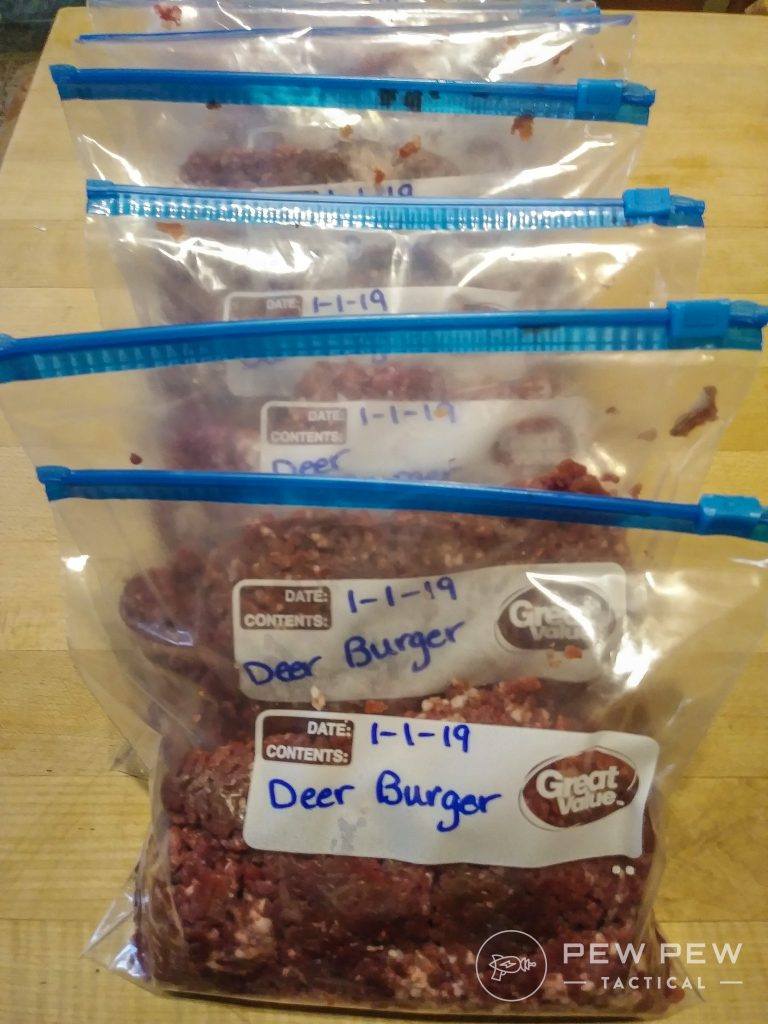
Conclusion
It would be impossible for us to cover everything there is to know about deer hunting in one article.
Hunters spend years learning whitetail behavior and how to increase their shot opportunities. We just don’t have enough space here to cover everything.
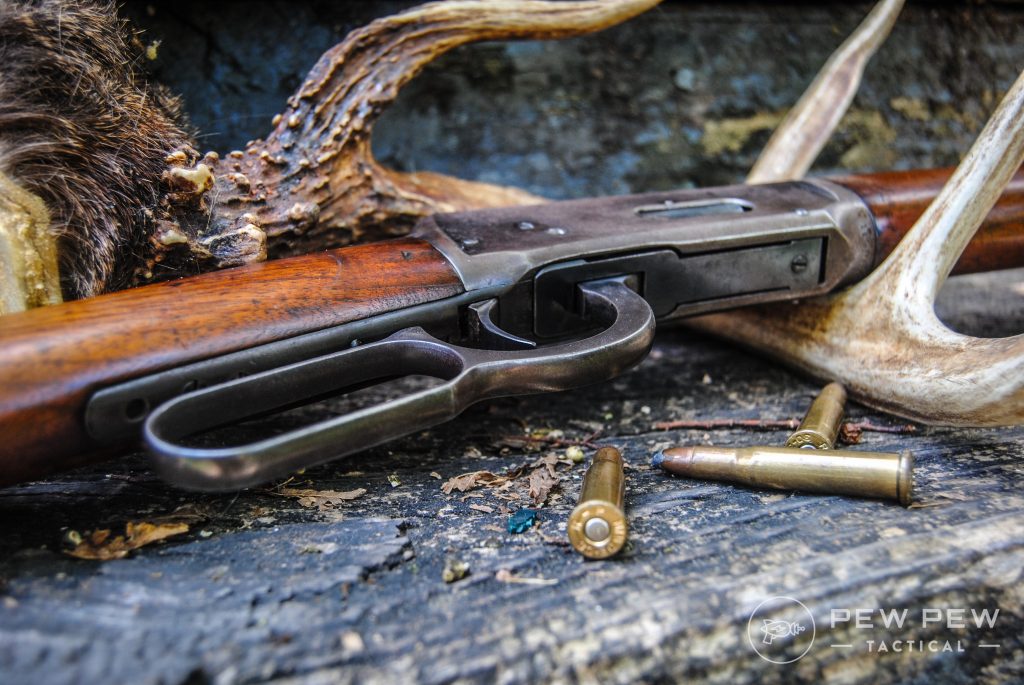
The best way to become a deer hunter is to hunt them. But be warned…deer hunting is an addictive hobby.
Also, a successful deer hunt is rarely measured by filled tags, antlers, or how much venison ends up in the freezer. At its core, deer hunting is about memories made in the great outdoors.
Have any essential tips or cool hunting stories you’d like to share? Please brag about them in the comments. If you’re brand new to hunting, check out our Checklist of Must-Have Hunting Gear for New Hunters and the Best Deer Hunting Rifles You Can Still Buy.

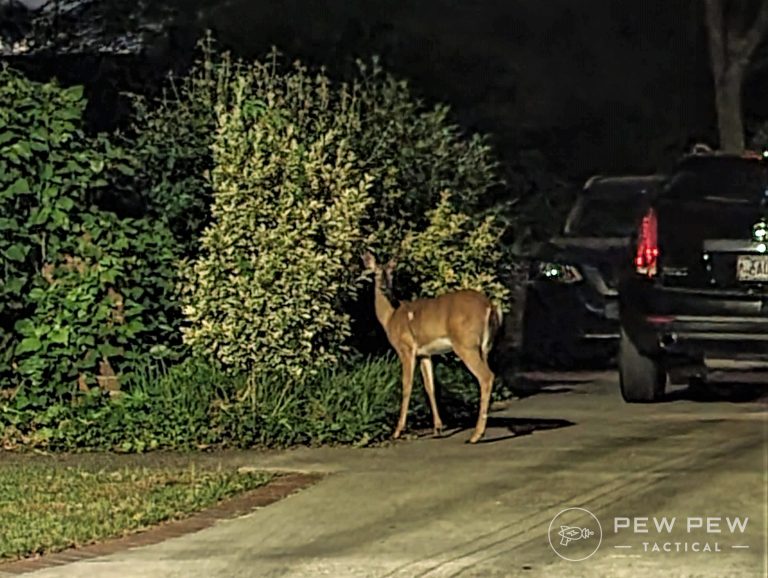
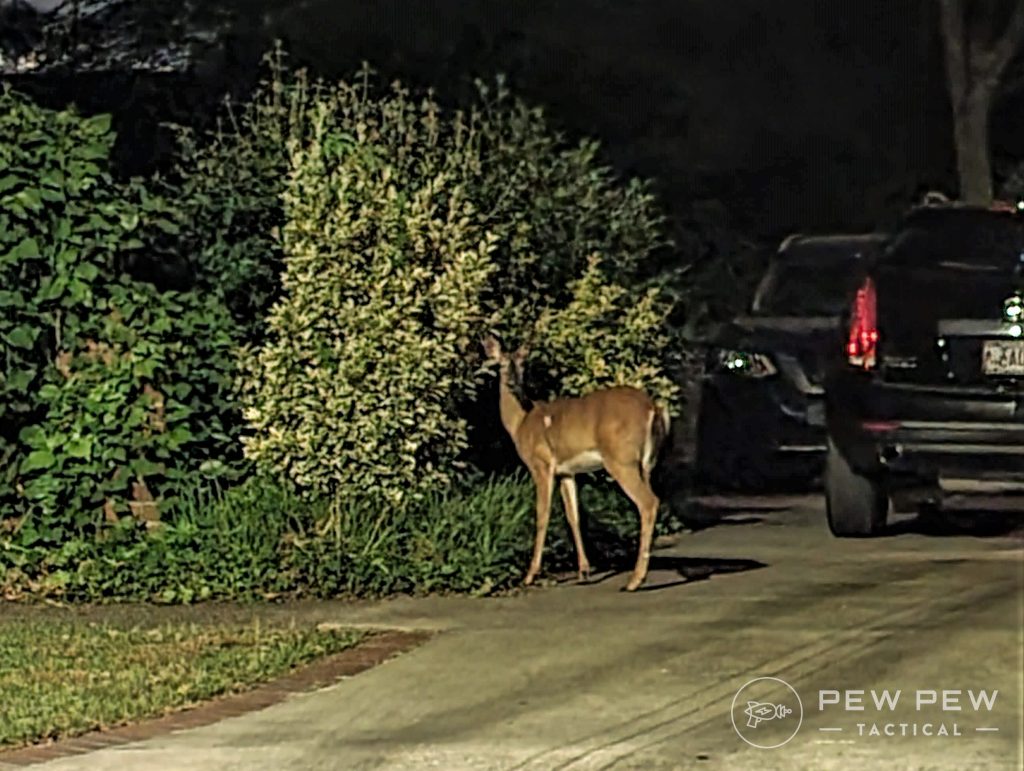

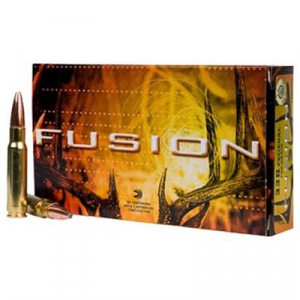
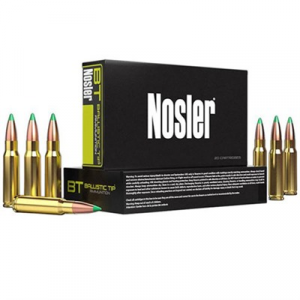

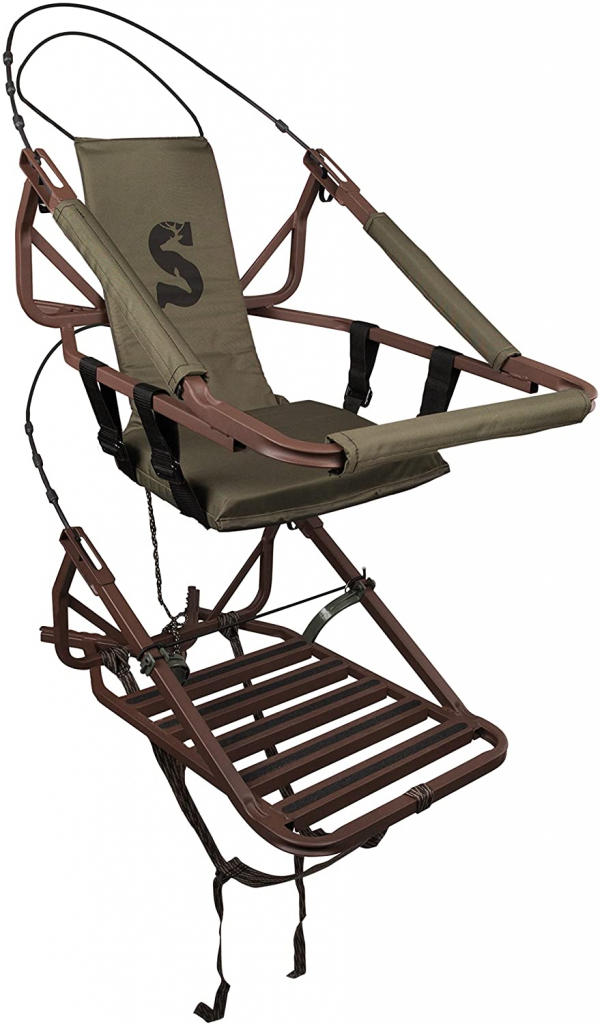




10 Leave a Reply
Oooh lets not forget the 1 oz. rifled slug. For the longest of long time that was the only legal projectile in my old state. Then I retired and moved to Kentucky and still hunted the first season there with the 12 ga shotgun and did very well. Last year bought myself the 6.5 Creedmoor and again had a great season despite having to track several of them quite a distance due to pass thru but to close for the bullet to expand. BUT my style of hunting I sort of like the shotgun (or 72 caliber) for dropping them where they stood success.
My favorite whitetail gun is my .35 remington. It has to be well over 50 years old, probably closer to 70. I got it from my uncle when I was 12 as he was getting a new rifle. We hunt in a lot of thick stuff in the NorthEast and it is perfect for that, but I probably have all my kills within 100 yards, and probably most within 50 yards. So many stories to share but another time. One short one for now. Regarding their incredible noses - Bucks forget about that in the rut. One time I got out of late work. My car was almost out of gas so I had to stop on the way home and fill up. Of course that would be the time I splashed my self with gas. Got home, grabbed the rifle and threw on some orange and headed into the woods. It was a rough day so I had a couple cigarettes. now, smelling like human, gas and cigarette I climbd into the stand figuring if nothing else I would at least see a nice sunset. Not 5 minutes later here comes the doe under hot pursuit by a decent size buck. Bam, down, gutted and back in the house under 30 minutes after having done absolutely everything wrong.
Hunting “ upwind of the deer “ , means your scent will blow downwind to them , you want to be downwind of the deer .
Good catch, Larry! Sometimes our fingers have a mind of their own when typing. Article has been updated!
Somebody's kidding somebody! Too much of this so-called deer hunting information is just plain fantastical. 180 grain bullets are OK to use in a Win. 30-30 (or 35 Rem.); but in an ‘06, or a 308? 165 grain bullets are as heavy as any hunter is ever going to need to go for whitetails.
Now, about those binoculars! I’ve hunted deer for more than half a century, all across the Northeastern United States. I ain’t never, not ever once, seen anyone carrying binoculars to use on whitetails; and as for that rangefinder? What are you guys, kidding me! Who would use a rangefinder to make shots at and inside 100 yards! (Which is where most whitetail kills are made.)
A really long shot on a whitetail might stretch to 150 yards; but the circumstances would have to be unusual. I’d say that better than 90% of the deer I’ve either taken, or seen taken were all shot at distances no greater than 80 to 100 yards; and many of these deer were shot inside of 50 yards — Which is a very common shooting distance for whitetails.
Now for the stove and lunch. That’s a joke, right! Personally, I’d put carrying a stove and lunch right up there with hunting your own back trail. (Just plain stupid!) Any hunter who’s going to carry any sort of food should always carry that food in a very well sealed package; and, as for the stove, (I’m laughing right now!) I, myself, have often been accused of being over-prepared.
(I mean ‘What?’ with my usual survival backpack, and all the other stuff, that I used to carry whenever I hunted in and around Rangeley, and Presque Isle, ME.)
So, what are the truly necessary things that a lone hunter has got to have in order to cope with an emergency? Most typically the things I always carried and would NOT have been caught without, whenever I was far from home, included:
1. A topographical map. (Make sure the one you get is as current and up-to-date as possible.)
2. A high quality compass. (I used to like Silva.)
3. A propane (cigarette) lighter, AND a backup magnesium fire starter.
4. Two working knives, (one can be a folding model) and some sort of knife sharpener.
5. 50 to 75 feet of nylon (military grade) paracord.
6. A tactical flashlight and extra batteries. (Both of which should be carried close to your body because cold batteries will burn up a lot quicker than warm ones.)
7. In my day we never carried them; but, today, I’d say that no sensible lone hunter should ever leave home without his cell (or, ideally, satellite) phone — A phone can be a real lifesaving backwoods tool!
The other items like meat bags and boning out a deer on site are, all, new to me. We used to simply gut a carcass, put the heart and liver into a plastic bag, and then either drag or cross-shoulder carry the animal out. (Other hunters you might come across would often help.)
For many years I belonged to a local deer hunting club, here, in Pennsylvania. (I, both, hunted and, sometimes, worked as a guide for the ‘city folks’.) If you are within a mile, or two, of the cabin then it makes no sense to stay out all day long. Unless they get pushed, deer only very rarely move around noontime. I used to be on stand by 5-5:30, stayed there until around 9:30-10:00, and then ‘still hunted’ my way back to the cabin where I stayed until around 3:00 o'clock.
HINT: Whenever you walk through the woods in the dark ALWAYS use your tac light in order to illuminate the trail, and make others aware of your human presence. (Yes, as a young man more than one over-exuberant ‘city slicker’ damned near bagged me!)
Over the years I harvested a lot of venison; and I often passed shots on deer that I really didn’t want. Useful ‘tricks of the trade’ that I would often use included: Placing myself between a feeding area (like a mast crop) and a bedding area. Covering ingress or egress areas on southern slopes. (especially during late morning and early evening) Never, under any circumstances, attempt to hunt your own back trail. (That's NOT going to work!) Always enter a hunting area from an unused side trail; and never so much as set foot on any area you intend to actually hunt.
If you’ve picked ‘the right spot’ then sit still and use both your eyes AND ears to be aware of whatever’s moving around you. (Believe it, or not, deer can be very noisy; and you will often hear them before you see them.) Be aware of both wind direction, as well as thermal currents. (This means to ‘hunt high’ in the morning, and ‘hunt low’ in the late afternoon.)
If you’re able to scout an area BEFORE actually hunting it then so much the better. Look for: scat, rub areas, and trails — especially trails. Once a trail is found try to determine: How, when, and in what direction it is most often used. Low land, heavily used trails are usually feed trails for does and younger deer. Lightly used trails that tend to run along higher ground are often less traveled scouting trails that are used by bucks.
(A lightly traveled trail that skirts around things, rather than going straight into an area, might be for the exclusive use of the bigger male animals. Look for signs of rubs and damaged tree limbs or bark.)
My own ‘deer guns’? A Remington Model 870 slug gun with a Leupold 2.5 to 7X scope. A Marlin 336C in 35 Rem. caliber with a Leupold 4X scope, and ‘see-thru’ rings; and a Sako Finnbear in 30-06 caliber (150 to 165 grain bullets) with a 3 x 9 Leupold scope.
(Whenever I wanted to look at something over any sort of distance I simply used my Leupold scope — Which, by the way, had absolutely fantastic light-gathering ability, and, oftentimes, was nearly as good as using a night vision device!)
About the only other thing I regularly did was to mask my scent. Doe urine, pine needles, vermin dung, and/or letting your clothes air out for a couple of days in the wood shed are all acceptable methods to use. I suppose some sort of water filter device would have been a good idea; but I never carried one.
I did get ‘lost’ for two days, once, in subzero weather. Yes, it’s true; you can never be dressed warm enough. I got myself out by waiting on top of one of the higher hills until after dark. That’s how I spotted a road off in the distance, marked the direction and coordinates on my topo map; and made the long walk out the next day.
It was, in fact, my survival backpack and the ‘goodies’ it carried that allowed me to pass that very cold night in relative bearable comfort. (I did get a small buck on that trip; so I guess I shouldn’t complain.)
Whitetail is mentioned several times in the article since it is the most common deer to hunt, but there are many types and depending on where you are hunting what you need will change.
Most of the Eastern United States deer hunting is done at very short ranges, however, out where I am in California it isn't uncommon for Mule Deer to be taken at 250-400 yards - the kinds of shots where you very much want a rangefinder.
Binoculars or a spotting scope is also far more common in the Western US since you can often glass miles of land from a single spot. Finding one good place to glass from and then spending 8 hours looking for game without moving is a standard hunting method for a number of game types out here.
Personally, I've never taken a stove out on a hunt, not worth the weight to me - if I'm that hard up for a hot lunch I'll take an MRE. I've also never hunted in the kind of cold that Randy gets up in WA.
Perhaps, a good follow-up article would be something a little more apropos like: 'WESTERN MULE DEER HUNTING'. ;)
What type of mule deer hunting?
I've hunting ag areas with wide open space and high alpine country with thick timber and small open pockets where the deer feed.
Like whitetails, mule deer are found in a lot of differing terrain and habitats.
Let us know what you'd like and perhaps we can work on putting something together.
I appreciate your comments and experience. You have to understand, my gear and my comments are about my experience.
We hunt WA backcountry. There is no cell service in any of the locations I hunt whitetails, mule deer or elk. There is no option to drag a deer out of the woods. In our whitetail camp most of the guys have stands that are good hour out of camp in very difficult terrain. With practice you can bone a deer by yourself and be ready to pack back to camp inside of 2 hours. In our elk camp (8 miles in the wilderness area) 2 of us process an entire elk and can be headed back to our camp in about 2 hours.
I'm just relaying what has worked for me and what I use. We all hunt in different areas, terrain and weather. The main thing is we are all hunting!
What weight .300 blackout would be best for Florida hogs? I’m after a weight and decent brand if anyone has suggestions!